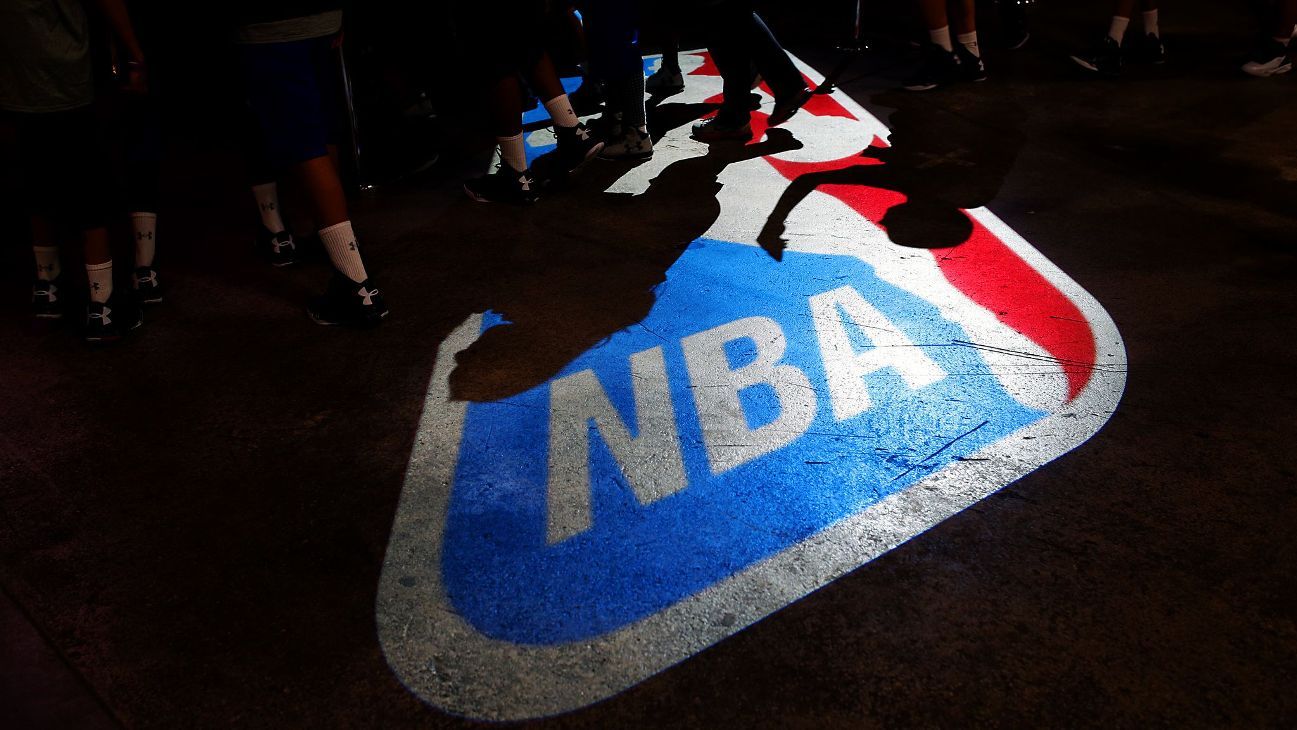The NBA is planning to roll out an ambitious aspect of its leaguewide contact tracing program by requiring players and many team staffers to wear sensor devices during all team-organized activities outside of games starting Jan. 7, according to a league memo obtained by ESPN.
Only Tier 1 and Tier 2 individuals — designations outlined in the league’s health and safety protocols that include players and specific staff members, such as coaches — will be required to wear Kinexon SafeZone contact sensor devices on the team plane, the team bus, during practices, and to and from the arena or their home practice facility in connection with team travel, the memo states.
Not wearing the sensors is subject to discipline, but it’s unclear what the discipline might be. Players are not required to wear the sensors during games or at the team hotel when traveling.
A testing period for the program began Dec. 23 and is expected to be implemented Jan. 7, according to a separate league memo obtained by ESPN.
The sensors do not record GPS location and will activate when coming within close proximity, which is defined as six feet, to another person wearing one — a point that health officials across the NBA emphasized to quell concerns about whether individual movements would be monitored. It is expected that the “proximity alarm” feature on the devices, which was active in the Orlando, Florida, bubble, will be disabled this season.
The memo states that the sensors will record “the distance and duration of in-person interactions” with others who are wearing a sensor, which the NBA believes will aid in its contact tracing reviews in instances of positive cases. Such reviews will be supplemented with interviews of players and staff members, as well as potentially examining camera footage at team facilities, to better understand who might have been exposed to an infected individual.
One health official with direct knowledge of the situation noted that the sensors should significantly help in better determining which players or staff might need to be quarantined should the situation arise.
“We don’t want to have to needlessly quarantine someone that doesn’t need to be,” said the official, who spoke on the condition of anonymity.
This effort is a collaboration of the NBA, the players’ union and medical officials, and officials involved believe it should serve in a proactive manner to identify situations where staff members and players may be interacting in close proximity on a frequent basis that could prove troublesome should an infection occur.
“We’re hopeful that it can also be used not only when there are cases, but proactively to try to reduce contacts even before there are cases,” NBA senior vice president David Weiss, who has worked alongside players’ union officials and medical experts throughout the pandemic, told ESPN.
The NFL has used these sensors during its season, and the NBA did on a voluntary basis in Orlando, with individuals typically wearing them on a lanyard. A league memo states that there are options for players and designated staff members to wear the sensors, which include a lanyard, wristband or another wearable, though players must wear the sensor in the waistband in the front of their shorts during practices.
Compliance among players was said to be strong in Orlando, but holding a season outside a contained environment during the coronavirus pandemic creates numerous opportunities for infection. As such, the NBA believes that requiring the sensors is a necessary step, even if it may prove inconvenient, as some team officials say it will.
“It’s definitely going to have its bumps in the road,” said the health official, who added that the sensors wouldn’t be worn on personal time.
One veteran NBA head athletic trainer described the program as “ambitious” and underscored the differences between NFL and NBA teams employing the sensors.
“It’s one thing to do that in the NFL, where you’re basically going to the same place for work every day,” the head athletic trainer said, speaking on the condition of anonymity. “I mean, you have theoretically eight one-game road trips a year [in the NFL]. That’s a far cry from what we do. We’ve got to set it up and get the things charged and distribute them and recollect them and distribute them and recollect them — and think [of the] planes, practices and bus rides and practices in the morning and games at night and a trip to the airport. It’s really something.”
At least two staffers from each team will be tasked with helping manage the Kinexon SafeZone system, but the data logged from the sensors will be shared only with the league and individuals’ teams and not other teams, a league memo states. Information gathered on the sensors will be “de-identified” and not accessible on an individual basis after the 2020-21 season, according to the memo.
